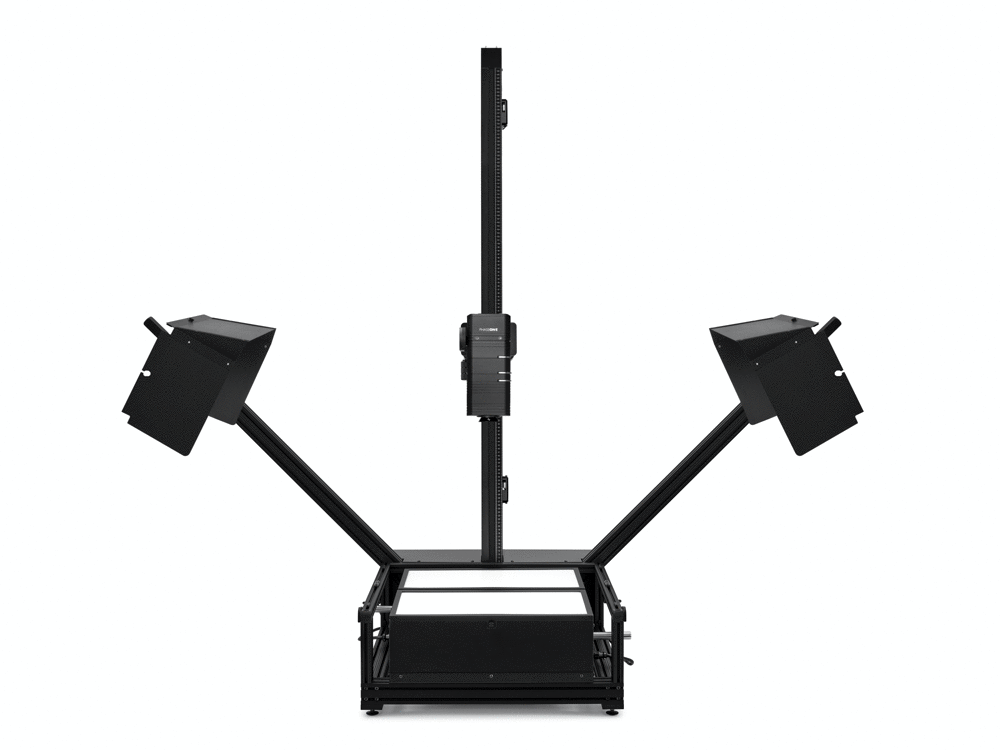As the resident 'spend less money' guy here, this is when I chime in to offer up some suggestions.
First the tools from these guys are superb:
https://www.negative.supply/
They are rock solid, all metal, and as of recently made in the USA. I use the 35mm carrier regularly, and I beta tested the 120 carrier. They made me a custom platform for 8x10 and I use their stock 4x5 solutions. Not being satisfied with the Kaiser Slimlight Plano they have recently developed their own light source which achieves 99 CRI. It's very difficult to do better with an LED unless you go with a trichromatic source from Heiland and dial in the correct settings for every roll/frame/sheet. Not really practical.
Then I would simply advise that you do not use MFD backs. Mostly because they simply complicated everything without significant returns on IQ. You're going to have less DOF, lenses that natively focus only to 1:2 and may not even AF. Plus the real key is a multishot solution for true RGB capture and few of the backs today do that. Some people will say you can scan with bellows using Rodagon G lenses, which yes are wonderful. But they're less wonderful when they're not scanning at 1:1 as tests have shown, and you'll find that macro lenses for native systems will do just as well assuming they're made semi-recently.
The two best camera scan cameras right now are the Panasonic S1R (my preference) and the Sony A7R IV. Both of these allow you to use pixel shift to achieve extremely high resolution files without stitching, and they're true RGB captures instead of the bayer readouts you get from the Phase backs unless I am mistaken. The scans I get from my S1R using the Sigma 70mm 2.8 ART Macro easily exceed what you get from Imacon/Hasselblad scanners. I would bet they match drum scans until you get to those extremely high resolutions (like 4000dpi from an 8x10 sheet). Plus the S1R outputs files that are easily read in ACR so they work with the best negative inversion software available today, which is Negative Lab Pro.
https://www.negativelabpro.com/
I have tried scanning with a digital medium format camera, and I am not going back to that I can tell you. If they added multishot to the current 150mp back it might be better than the S1R but I'm not interested in bayer interpolated scans. The 50mp 44x33 sensors are just not worth it at all for scanning.
***Edit***
A couple of notes from experience.
At least with a 24x36 sensor and shooting at F5.6, you can successfully align your rig with a tool as simple as a bubble level. I have not had any issues with focus at the edges or unsharpness even with 170+mp scans of 5x7 sheets. So a good copy stand is basically fine, but it can be tricky to find a good one. Another point toward mirrorless 135 bodies is that fewer copy stands are rated for MFD level weight.
After extensive testing by a guy named Richard Karesh in the digitizing film group, the 70mm 2.8 ART macro performed at least as well as any other option included some exotic lenses from Rodenstock. But if you get a Sony the 90mm G macro is excellent. My problem with lenses in the 90+ range is that you are going to have more trouble with larger formats assuming you don't want to stitch.
Further proof of the pudding is that Sandy King (the formulator of Pyrocat HD) is currently digitizing his 5x7 negatives with a Sony A7R IV in pixel shift mode. His standards are quite high.
The standards of institutions are actually not that intersting if you consider they're targeting HABS/HAER, which is somewhat low res vs what the average large format printer might try to do.

